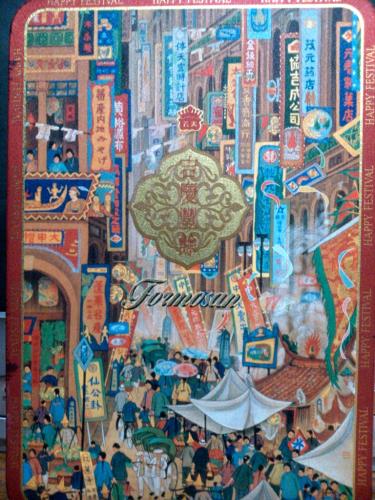Consultant of Bai-mi Wooden Clog Village in Su’ao, specialist/lecturer of Yu Yu Yang Museum, Marketing Manager of Lee Gallery.

Taiwan has always taken pride in being a food lover’s paradise. Sadly, some greedy corporations have recently tarnished Taiwan’s reputation, producing toxic food products. The incidents have stirred public outrage in Taiwan, causing some to boycott large food corporations and putting the issue of food safety into the spotlight.
But amid all the scandal, there are still some conscious corporations that work hard to protect consumers’ health and safety, who have rigorous internal food inspection facilities. One of these companies that stands out is the 81-year-old I-Mei Foods, which has successfully safeguarded the values of food safety throughout the years.
I-Mei started off in 1934 as a bakery near Taipei’s cultural heartland of Tataocheng. It strives to be what it calls a “morally conscious and honest bakery”, placing a great deal of emphasis on the source of its products. One of its best known products is the Taiwanese classic snack pineapple cakes, using fresh locally-grown pineapples for the filling, rather than adding winter melon paste like other bakeries do. The cake is not overly sweet and is made in the shape of a pineapple. The word “pineapple” also sounds auspicious in the local Taiwanese dialect, making it an ideal souvenir from Taiwan.
Apart from food safety, companies also can’t neglect packaging. I-Mei started to think about recycling and using reusable materials two decades ago, before being environmentally conscious was widespread. For example, it used metal boxes and recycled paper, setting a good example for consumers and the industry.
I-Mei also drew heavily from indigenous culture for its packaging design. The picture attached shows a painting called “Festival on South Street” on the box. The painting is by Kuo Hsueh-hu, a first generation Taiwanese painter and a native of Tataocheng. The painting depicts a busy scene from Dihua Street during the Ghost Festival. Many vibrant aspects of life and culture in Tataocheng are showcased in the painting, such as the writing in Chinese, Japanese and English, the designs of the shop banners, the rickshaws and the famous City God Temple. The painting took about half a year to complete and won an important art award in Taiwan. Four years after it was finished, I-Mei opened its first shop just one block away from the street.
Corporations and the arts are complementary. Artists can enhance a company’s image, while companies can help promote and sustain culture. In Dihua Street, one can see many examples of architecture fusing Baroque styles and parapets. Due to its proximity to the Danshui River, many foreign companies also established presences in Tataocheng, exporting local tea overseas. After the Second World War, many cloth merchants also set up bazaars, cultivating many entrepreneurs. The multicultural atmosphere in turn helped breed a creative class of artists and Taiwanese singers.
In a bid to revitalise the area, artists and creative groups have set up bases in Tataocheng. They are working together with quality corporations to market local culture, breathing new life into the community to create a better future.